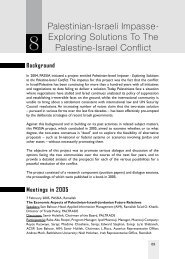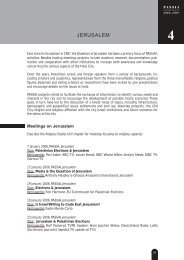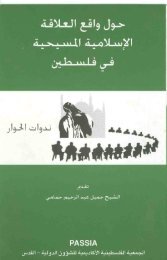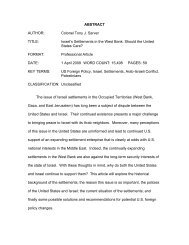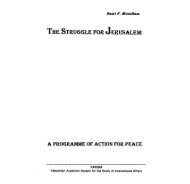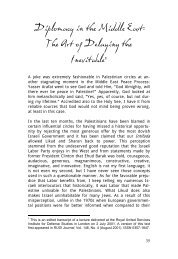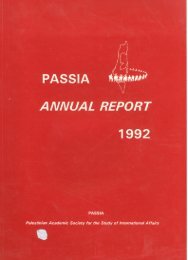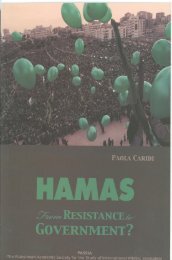FINLAND & PALESTINE Proceedings of a Joint Workshop
FINLAND & PALESTINE Proceedings of a Joint Workshop
FINLAND & PALESTINE Proceedings of a Joint Workshop
Create successful ePaper yourself
Turn your PDF publications into a flip-book with our unique Google optimized e-Paper software.
_---..~-------.---.---------",ikkoi.ouhIVlJ()rf<br />
A ground plan <strong>of</strong> the remains <strong>of</strong> Qasr Tuba in the desert <strong>of</strong> east<br />
Jordan (photo on the right) is also a large enclosure that could<br />
be interpreted as an Umayyad complex intended for travelers<br />
and pilgrims. It would have been on a trade route assumed to<br />
connect to the East, possibly with Iraq, Mecca and Medina,<br />
instead <strong>of</strong> Jerusalem.<br />
These, and other such Umayyad structures for travelers, are, in<br />
my opinion, a much better explanation to the southern courtyard<br />
at Qasr Hisham. Indeed, there is nothing in the general<br />
architecture or arrangement <strong>of</strong> the rooms, or in the rather<br />
mundane small finds, that would force one to accept the original<br />
interpretation that this was a palace built for the private<br />
pleasures <strong>of</strong> the mighty Umayyad caliphs. IS<br />
18 There has been discussion on the function <strong>of</strong> the Umayyad desert castles<br />
and who built them. See for example: Bacharach, J. L. "Umayyad Building<br />
Activities: Speculations on Patronage." Muqornos 13 (1996)27-44. But, to my<br />
19



